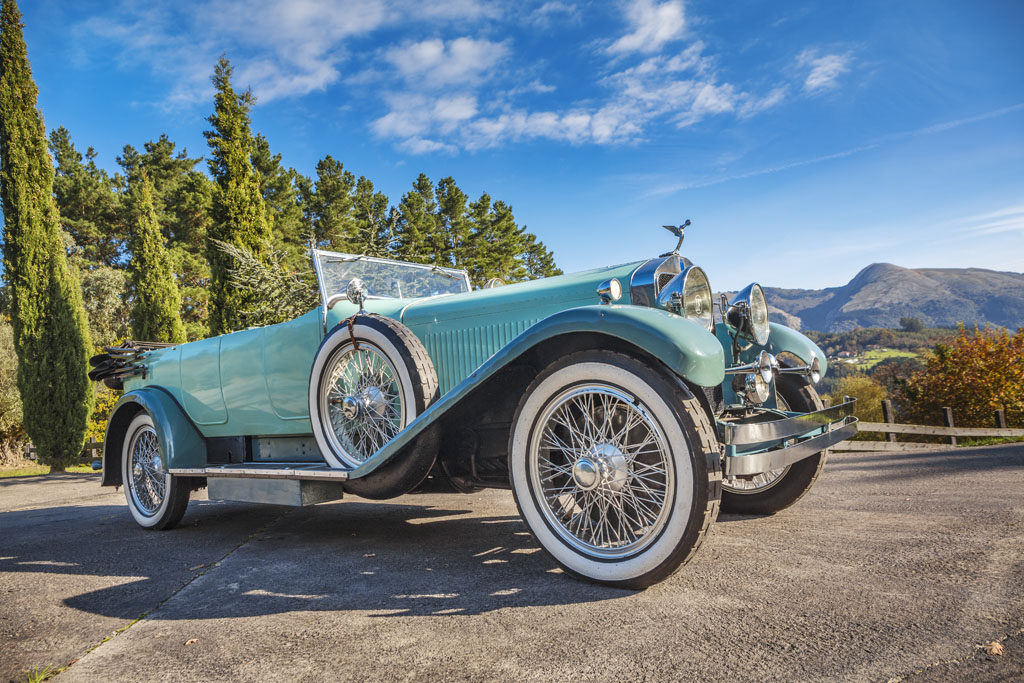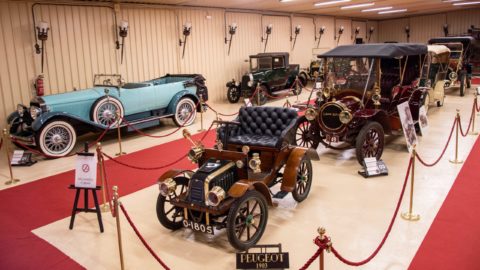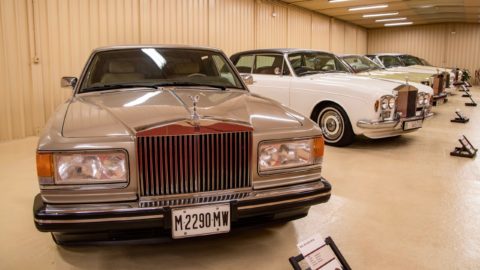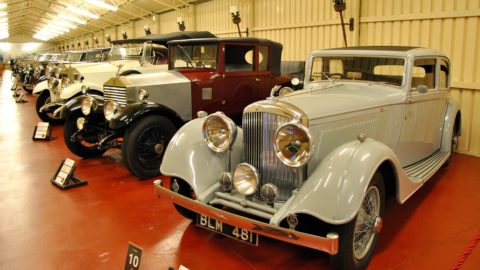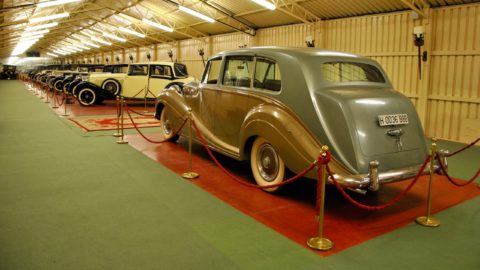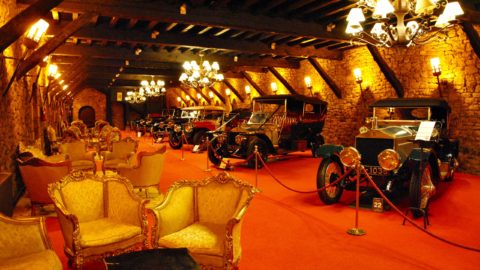1925 Isotta Fraschini Type 8A
The superb open-body, seven-seater model on display, built by Cowley Coach & Motor Co, was acquired in Boston in 1997, the same year it was featured on the cover of The Automobile magazine under the evocative title “La Stupenda”. In its original blue color, parts of the engine were rebuilt in the 1960s with such success that the car completed a journey through several European countries without incident.
The dashboard controls are grouped around a small steering wheel, with starting instructions in Italian and English, while a small central button activates a melodious Bosch horn. An elegant Jaeger battery provides information on speed, oil pressure, and water temperature. A simple circular panel controls ignition, starting, and lighting. Two Bosch rods clean the open Auster windscreen. Atop the radiator sits the Spirit of Triumph mascot, the brand’s emblem sculpted in bronze by François Bazin, which later influenced other mascots, such as the one used by Packard.
The first Tipo 8 model was unveiled in Milan in 1919, aiming to conquer the North American luxury car market while upholding the brand’s prestige. In 1925, it was succeeded by the more powerful Tipo 8A, which retained the long chassis and imposing silhouette accentuated by its seemingly endless hood. A total of 950 units were produced. The final and most refined variant, the Tipo 8B, was introduced in 1930, marking the swan song of this prestigious brand.
Founded in Milan in 1898 by Cesare Isotta and the Fraschini brothers, the company experienced significant growth after World War I, particularly in the North American market. The 8A model became a coveted luxury car among celebrities of the era, such as Rudolph Valentino, and was also featured in literature, including Tender Is the Night by F. Scott Fitzgerald, and in films like The Damned, where a 1928 model was outfitted with leopard-skin seats and a gold-plated telephone. In Italy, Isotta Fraschini was the most exclusive and expensive automotive brand of its time.
In 1908, the brand triumphed in American racing circuits and won the Coppa Targa Florio in Italy with driver Vincenzo Trucco. By 1915, production shifted to military vehicles and engines for aircraft and ships. After the war, the company resumed its focus on high-end automobiles, concentrating production on a single model—the Tipo 8—to compete with Rolls-Royce and Hispano-Suiza. Chief engineer Giustino Cattaneo later developed a more powerful version, the Tipo 8A.
In 1935, Isotta Fraschini came under the control of the Caproni armaments group, which continued producing military and civilian trucks until 1950. With the unveiling of the Monterosa model in 1948, the company announced its end.
- Bodywork: Open Touring
- Capacity: 7,370 cc
- Speed: 160km/h
- Period: 1919-1932
- Units: 950
